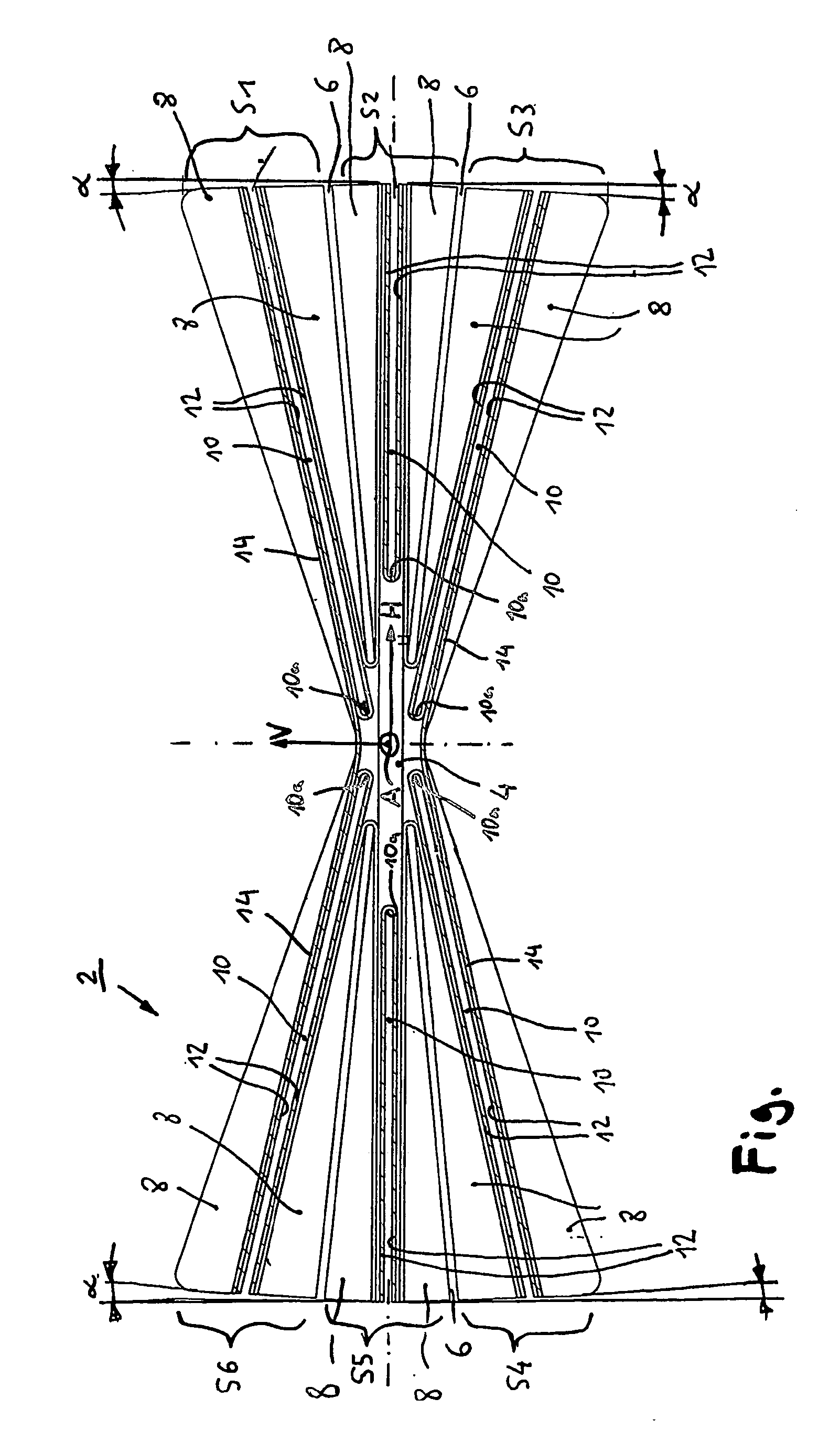Drilling element for a bearingless rotor
a technology of bearingless rotors and drilling elements, which is applied in the direction of liquid fuel engines, vessel construction, marine propulsion, etc., can solve the problems of unfavorable warpage of cross section profiles, and excessive swinging of joints of rotor blades to rotor heads, so as to achieve low torsional stiffness, high swinging stiffness, and high twisting strength
- Summary
- Abstract
- Description
- Claims
- Application Information
AI Technical Summary
Benefits of technology
Problems solved by technology
Method used
Image
Examples
Embodiment Construction
[0015] The figure shows a schematic cross sectional depiction of a twist element 2 for a bearingless rotor. The twist element 2 according to the invention is made predominantly of composite fiber material. As can be clearly seen in the drawing, said twist element 2 has a symmetrical, flattened cross section that has approximately the contour shape of a horizontal section through the center of a double cone. The horizontal center axis of the cross section of the twist element is designated with the reference letter H and the vertical center axis with the reference letter V. It can also be said that the contour of the cross section of the twist element has approximately the shape of two relatively narrow, horizontal, essentially isosceles triangles that are oriented symmetrically with respect to the horizontal and vertical center axes H, V and that are joined together in the area where their tips face each other. This contour or cross section is almost completely filled up by composit...
PUM
 Login to View More
Login to View More Abstract
Description
Claims
Application Information
 Login to View More
Login to View More - R&D
- Intellectual Property
- Life Sciences
- Materials
- Tech Scout
- Unparalleled Data Quality
- Higher Quality Content
- 60% Fewer Hallucinations
Browse by: Latest US Patents, China's latest patents, Technical Efficacy Thesaurus, Application Domain, Technology Topic, Popular Technical Reports.
© 2025 PatSnap. All rights reserved.Legal|Privacy policy|Modern Slavery Act Transparency Statement|Sitemap|About US| Contact US: help@patsnap.com


